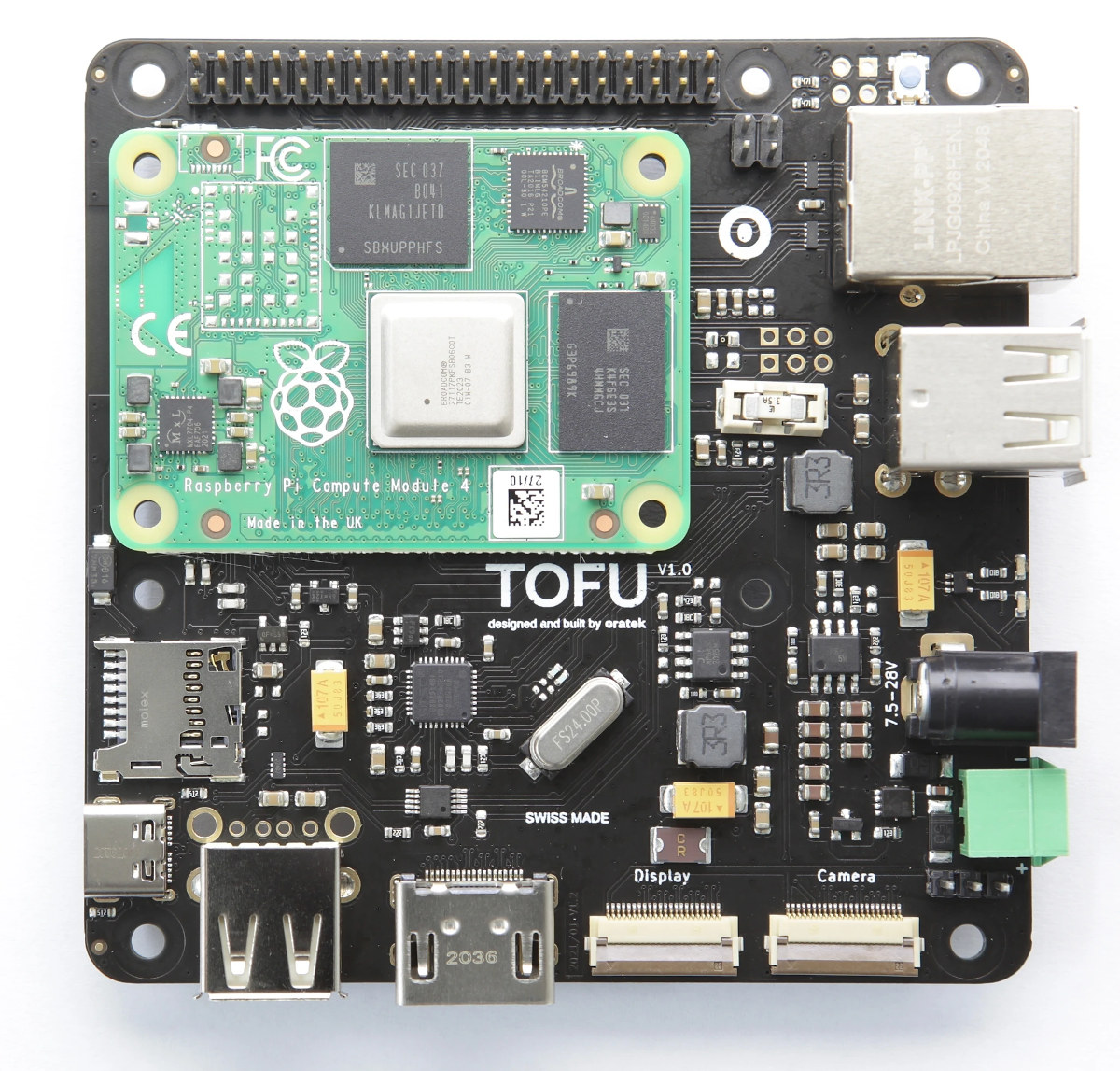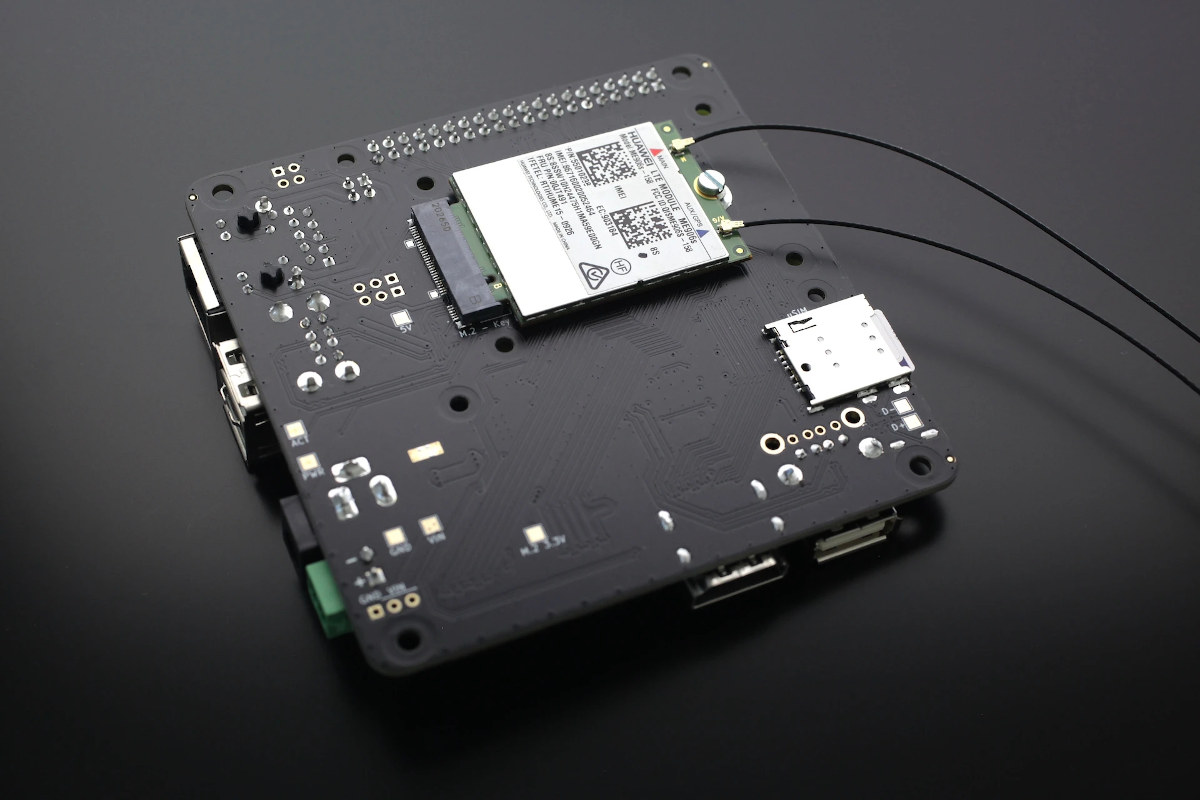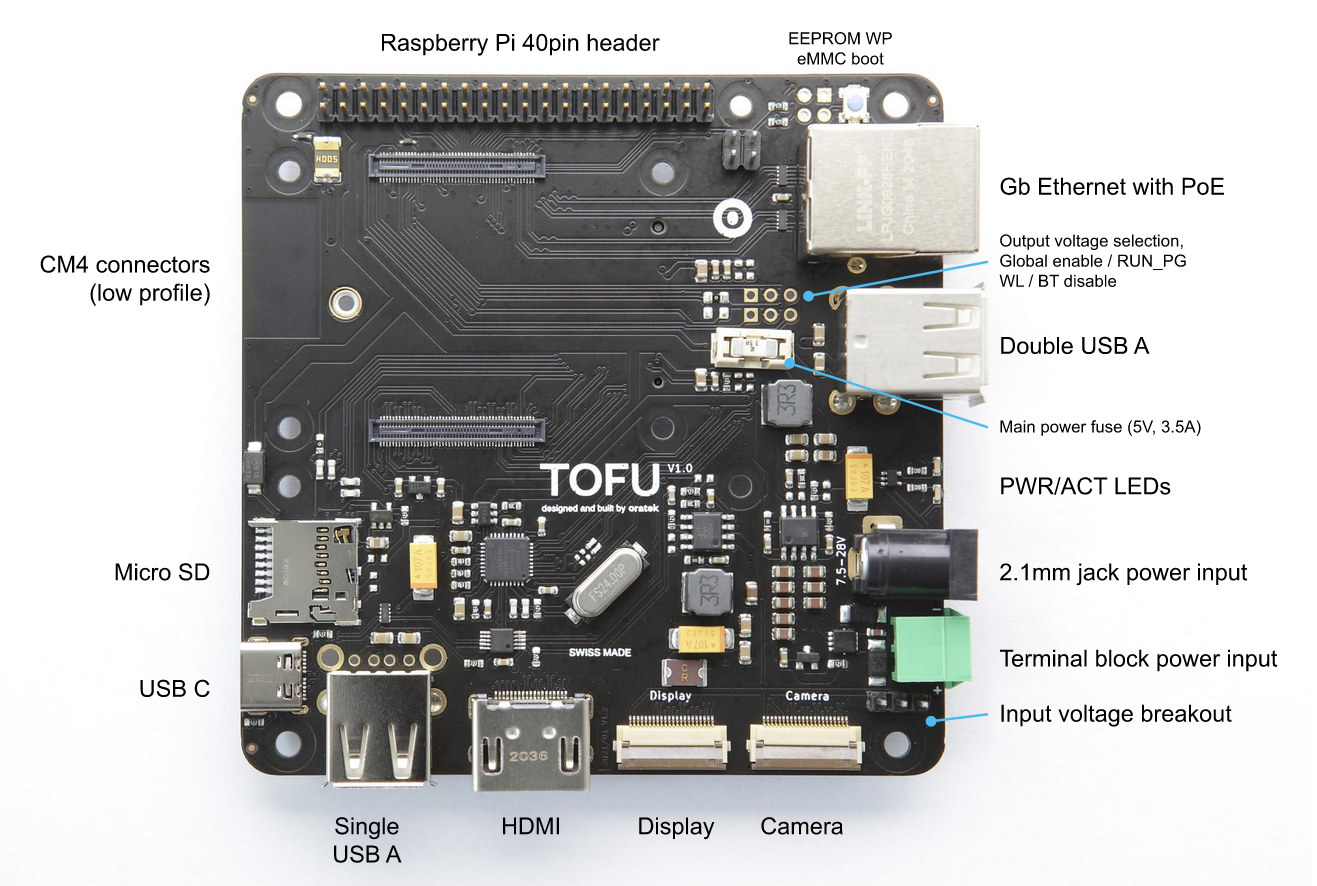Since the Raspberry Pi Compute Module 4 launch last fall, we’ve seen several interesting carrier boards for the system-on-module including Wiretrustee to build a NAS with up to four SATA drives, the compact, Arduino-sized Piunora board that also include an M.2 socket, or Over:Board mini-ITX carrier board.
Oratek brings another one specially designed for industrial use cases with TOFU Raspberry Pi Compute Module 4 carrier board offering wide DC input, Gigabit Ethernet with PoE, M.2 NVMe SSD or 4G LTE modem support, among many other features.
Specifications:
- Raspberry Pi Compute Module 4 socket
- Storage
- NVMe SSD via M.2 2242 Key B socket (See Expansion section)
- MicroSD card slot
- Video Output
- HDMI 2.0 port up to 4Kp60
- MIPI DSI connector for Raspberry Pi LCD display
- Camera – 1x MIPI CSI connector for Raspberry Pi camera
- Connectivity
- Gigabit Ethernet port with PoE
- Optional WiFI 5 and Bluetooth 5.0 on Raspberry Pi CM4 module
- Optional 3G/4G LTE (USB) modem via M.2 2242 Key B socket (See Expansion section)
- USB – 3x USB 2.0 Type-A ports, 1x USB-C OTG port
- Expansion
- 40-pin Raspberry Pi GPIO header
- M.2 2242 Key B socket with micro-SIM cardholder
- Misc – LEDs, , boot selection,
- Power Supply
- 7.5 to 28V via 5.5/2.1mm power barrel jack or 2-pin 3.5mm terminal block.
- 5V via USB-C port, but not sufficient for M.2 cards
- 3-pin Input voltage breakout header designed to power HAT or other expansion boards
- Circuit protections added for safety reasons (ESD, over-and reverse-current protections) including 5V/3.5A fuse
- Dimensions – 9×9 cm and M3 mounting holes
The board is designed to work with a CM4 module running Raspberry Pi OS with minimal changes to config.txt and the enablement of nvme-coremodule in the OS as explained in the Wiki that also includes mechanical files and PDF schematics.
Oratek has successfully tested several M.2 cards with the carrier board. Two NVMe SSDs with the 128GB KingSpec NE 2242 and Western Digital PC SN520, and three wireless modules, namely Huawei ME908s-158 & ME936, plus Sierra Wireless AirPrime EM7345.
Oratek TOFU can be pre-ordered on the company’s online store for 99 CHF or $109.33 including taxes. Shipping is expected to start in mid-March. You’ll still need to purchase Raspberry Pi Compute Module 4 separately in a configuration that meets your needs. The company can also customize the board, i.e. remove unneeded connectors and/or chips, for orders of more than 200 units.
Via Tom’s hardware and LinuxGizmos

Jean-Luc started CNX Software in 2010 as a part-time endeavor, before quitting his job as a software engineering manager, and starting to write daily news, and reviews full time later in 2011.
Support CNX Software! Donate via cryptocurrencies, become a Patron on Patreon, or purchase goods on Amazon or Aliexpress







